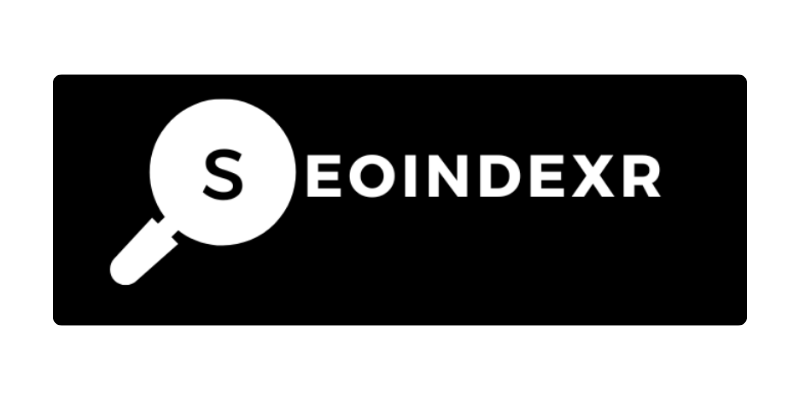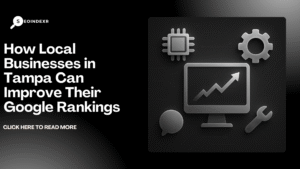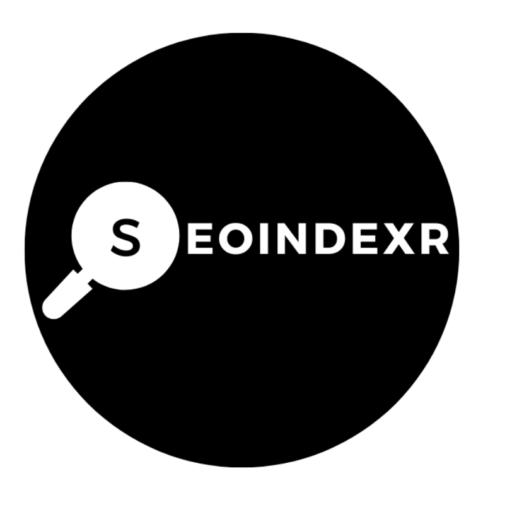Search engine optimization is entering a new era as artificial intelligence permeates every layer of discovery. Instead of just focusing on rankings in a list of ten links, brands must think about how their content appears in conversational assistants, generative summaries and interactive search results. Large language models such as OpenAI’s ChatGPT, Anthropic’s Claude, Google’s Gemini and Perplexity have become everyday tools for consumers seeking answers, and Google’s AI Overviews overlay concise summaries on many results pages. This trend means fewer clicks for some informational queries, but it also gives marketers new surfaces to be discovered. Optimizing for this environment requires a holistic approach that combines technical SEO, content depth, brand recognition and engagement signals. In this comprehensive article we’ll explore key trends shaping SEO in the second half of 2025—from generative engine optimization (GEO) and AI adoption statistics to schema markup, listicle strategies, topical authority and link building. We’ll also look at search engine updates and provide actionable tactics you can implement today to stay ahead in SEO’s AI era.
Table of Contents
ToggleUnderstanding SEO vs GEO in 2025
Traditional SEO focuses on ranking web pages in search engine result pages (SERPs). However, as generative AI becomes integrated into search, a complementary discipline known as generative engine optimization (GEO) is emerging. GEO is the practice of making your brand or content more likely to be surfaced by AI assistants and large language models. These models do not index the web in the same way search engines do; they rely on training data, citations and structured knowledge to generate answers. To succeed in GEO you must think about how your brand appears in third‑party sources (like news articles, Wikipedia, forums and listicles) that language models reference, as well as how your content is structured for machine understanding.
Importantly, SEO and GEO are not mutually exclusive; many best practices overlap. Technical optimizations like fast page load, descriptive metadata and mobile friendliness remain essential for search ranking and help AI systems interpret content. High‑quality, comprehensive content also performs well in both search and AI assistants. The key difference is emphasis: GEO prioritizes building a strong external footprint so that when a model generates a response it draws upon your brand as an example. It requires public mentions, robust internal knowledge graphs and strategic partnerships. As 2025 progresses, most businesses will need to integrate both SEO and GEO into a unified strategy to capture traffic from search engines and visibility within AI‑generated answers.
AI adoption is reshaping SEO workflows
AI is no longer an experimental technology for marketers—it’s embedded in everyday workflows. Recent industry data shows that more than half of marketers now use generative AI for SEO tasks such as writing blog posts, generating meta descriptions, analyzing search intent and performing competitive research. According to one 2025 survey, 56 percent of marketers already use generative AI in their SEO processes and 83 percent of large organizations report measurable SEO gains from AI integration. The same research found that AI‑driven SEO campaigns can boost organic traffic by 45 percent and increase e‑commerce conversions by 38 percent. With the AI SEO tools market projected to grow from about $1.2 billion in 2024 to $4.5 billion by 2033, adoption will only accelerate.
The impact of AI extends beyond content generation. Tools powered by machine learning now automate keyword clustering, identify gaps in topical coverage, personalize web experiences and even help with internal linking. For example, AI writers can produce first drafts, leaving editors to refine tone and ensure accuracy. Analytics tools can flag declining keywords and suggest new topics based on trends. While some fear that AI will replace SEO professionals, the reality is that these technologies augment human expertise and free time for strategy. As 69 percent of SEO specialists expect their roles to be disrupted by generative AI, those who embrace automation and focus on strategic tasks like content architecture, brand storytelling and technical oversight will thrive.
Schema markup becomes a focal point
Structured data, or schema markup, has long been an SEO best practice because it helps search engines understand the type of content on a page. In 2025 it’s becoming even more important as large language models ingest structured data to ground their responses. Engineers from both Bing and Google have publicly explained that their generative AI systems rely on schema to interpret web content because it’s computationally cheaper than parsing unstructured text. Adding schema sends explicit signals about the purpose of your page—whether it’s an FAQ, product, recipe, how‑to guide or data set—and increases your chances of being used as a source for AI answers.
To leverage this trend, start by auditing which schema types are most relevant to your niche. Frequently used schemas like FAQ, Q&A, HowTo and Article are widely supported, but there are also specialized types like Carousel for collections of items, DataSet for tables and Organization or Author for verifying who created the content. Mark up your pages using JSON‑LD and test them with tools like Google’s Structured Data Testing Tool. Make sure the structured data matches the visible content to avoid spammy signals. As generative AI continues to rely on structured inputs, thorough and accurate schema will be a differentiator.
Listicles, brand mentions and citation visibility
One surprising outcome of the generative AI boom is the renewed importance of listicles—articles that rank or round up products, tools or services within a category. Studies in 2025 show that listicle articles are cited by language models more often than other formats because they offer concise comparisons and authoritative recommendations. When ChatGPT or another AI tool generates an answer about “best email outreach software,” it frequently draws from curated lists compiled by industry blogs. As AI adoption grows, being mentioned on these lists can improve both traditional SEO (via backlinks) and GEO (by being referenced in AI responses).
To capitalize on this, businesses should aim to create high‑quality, unbiased listicles within their own niches and also seek placement on reputable lists. Outreach to publishers, niche bloggers and SaaS review sites can help secure spots. When producing your own lists, be transparent about criteria, include your competitors and provide genuine comparisons. This builds credibility and increases the likelihood that your content will be referenced by AI models. Over time, consistent brand mentions across different platforms strengthen your reputation in both human and machine eyes.
AI Overviews and the shift to mid‑ and lower‑funnel content
Google’s AI Overviews present concise summaries of search results, pulling key information from multiple sources. While these overviews improve user experience, they can reduce traffic to the underlying sites because the main answer appears at the top of the results page. Data shows that some websites are seeing more impressions but fewer clicks when their content is featured in an AI Overview. As AI Overviews appear in more search results, many publishers are pivoting their strategies.
One response to reduced top‑funnel traffic is a shift toward mid‑ and lower‑funnel content. Instead of focusing primarily on broad informational queries like “what is inventory management,” brands are producing deeper guides, comparison pages and product‑focused content that targets users closer to making a purchase. These pages may still be surfaced in generative answers, but they also have stronger conversion potential when they receive clicks. When combined with strong internal linking and calls‑to‑action, mid‑funnel content helps capture qualified traffic even as informational searches become zero‑click experiences. For example, a software company might build a category page comparing different inventory management solutions or industry‑specific landing pages that speak directly to prospects’ needs. These pages offer unique value that generative AI cannot fully replicate.
Creating AI tools and interactive assets
The democratization of AI coding tools makes it easier than ever for brands to build simple, useful tools—calculators, planners, templates and generators—that answer specific user questions. WordStream predicts that more businesses will release AI‑powered tools in the second half of 2025 because tools not only attract backlinks and user engagement but also appear in search results and can be referenced by AI models. For example, a mortgage broker might offer a loan affordability calculator, or a marketing agency could provide a headline analyzer. Such tools serve as evergreen assets that continue to drive traffic and build authority.
When brainstorming tool ideas, think about your audience’s pain points and tasks that can be automated. Make the tool easy to use and embed explanatory content around it for added value. After launching, promote your tool on social media and reach out to blogs or influencers who might feature it in roundups. These interactive assets complement blog posts and help diversify your content strategy in a way that resonates with both search engines and AI assistants.
Link building remains critical
Backlinks remain one of the strongest signals in Google’s algorithm, and their importance may increase as more sites compete for visibility in AI and traditional search. In 2025 link‑building strategies are evolving to align with SEO and GEO goals. Digital PR campaigns that land mentions in well‑known publications not only drive referral traffic but also contribute to brand visibility in AI training data. Guest posts and thought leadership pieces on niche sites create deep links to mid‑funnel pages, supporting your conversion‑focused strategy. Additionally, securing placements in curated lists or resource pages (listicles) strengthens both link equity and citation frequency in AI responses.
Quality should always trump quantity. Focus on earning links from sites within your industry or topic cluster because search engines interpret these as more relevant endorsements. Invest time in building relationships with journalists, participating in expert roundups and offering data‑driven insights that others will want to reference. As Google continues to refine E‑E‑A‑T (experience, expertise, authority and trustworthiness) signals, a healthy backlink profile anchored in relevance and quality will be indispensable.
Building topical authority for long‑term success
In the zero‑click era, producing random articles is no longer enough. Topical authority is the concept of demonstrating deep, organized expertise across an entire subject area. When a site covers a topic comprehensively and structures its content logically, it sends strong signals to search engines and AI models that the site is a trusted source. Building topical authority requires a deliberate content strategy that goes beyond publishing isolated posts.
A common approach is to develop content hubs or clusters. Start with a pillar page that provides an in‑depth overview of your core topic—for example, “The Ultimate Guide to Sustainable Home Products.” Then create a series of supporting articles that explore subtopics like eco‑friendly kitchen tools, plastic‑free bathroom essentials, compostable cleaning products and DIY zero‑waste hacks. Interlink these pieces using descriptive anchor text so that readers and search engines can navigate your content easily. This hub‑and‑spoke model allows you to address the full range of user questions while building semantic connections that AI can recognize.
Cover the entire topic, not just the most obvious keywords. Use tools such as AlsoAsked, People Also Ask boxes or AI brainstorming to discover related questions and pain points. Refresh and expand older content with updated information and new internal links to demonstrate continuous relevance. Structure your site with clear categories and tags that align with your topic clusters. A clean URL structure (e.g., example.com/seo/on-page-seo-guide) helps search engines understand how pages relate to each other.
On‑page features like a table of contents can enhance user experience and help search engines parse your long‑form guides. Implement schema markup (FAQ, HowTo, Article, Breadcrumb) to reinforce context. Off‑page signals also matter: seek backlinks from authoritative sites within your niche, publish content written or reviewed by subject‑matter experts, and incorporate original research or proprietary data that others will cite. Engage in thought leadership on platforms like LinkedIn or podcasts to amplify your expertise. Even including expert quotes in your articles can enhance credibility and encourage natural sharing. By systematically building topical authority, you create a compounding advantage in both SEO and GEO—your site becomes the resource that search engines and AI assistants turn to when summarizing the topic.
Quality AI content and emerging assistant features
There is growing debate about whether AI‑generated content harms rankings. Recent research analyzing hundreds of thousands of pages suggests that quality AI‑generated content does not negatively impact Google rankings when it meets user intent and provides value. The key is to ensure that AI‑written drafts are fact‑checked, edited for voice and aligned with your brand’s expertise. Thin, purely automated articles still risk penalties, but responsibly produced AI content can scale your output without sacrificing quality. In fact, a growing number of businesses are using AI tools to generate first drafts and leveraging human editors for refinement.
Meanwhile, AI assistants themselves are evolving. OpenAI has introduced new modes such as GPT Agents, which can handle multi‑step tasks like researching and booking appointments. Study Mode in ChatGPT offers a distraction‑free environment designed for learning, while Anthropic’s Claude has rolled out industry‑specific services such as financial analysis. These features expand the types of queries that users may direct to AI assistants instead of search engines. To stay visible, brands must make sure their information is accurate and authoritative across channels. Monitor how your site is being cited by AI tools and update any incorrect data. Claim and optimize your business profiles, product feeds and knowledge panels so that AI models have trustworthy information to draw from.
Recent search and browser updates
The search landscape continues to change rapidly with new features that influence user behavior. Google has launched AI‑powered shopping summaries in Chrome that automatically condense store product descriptions, giving U.S. shoppers a quick overview without clicking through. The company has also updated its AI Mode to support file uploads and live video search, enabling users to ask questions about documents or videos directly from the results page. Another innovation is Deep Search, which lets users perform actions like calling a business or conducting research within the search interface, reducing friction for transactional queries. At the same time, Google clarified that advanced entity optimization (AEO) and geotagging are not prerequisites for appearing in AI Overviews—relevant, well‑structured content is still the primary requirement.
These updates underscore how search is becoming more interactive and integrated. Websites that provide structured data, clear calls‑to‑action and up‑to‑date business details will benefit from features like deep links and action buttons. Keep an eye on how your pages are displayed in both desktop and mobile search results. Use tools like Search Console to track impressions and clicks for AI Overview placements. By understanding and adapting to these changes, you can maintain visibility even as the search experience evolves.
Actionable tips to succeed in SEO’s AI era
- Develop a unified SEO and GEO strategy that covers traditional search rankings and visibility within AI assistants.
- Adopt structured data markup across your site, focusing on schema types relevant to your content and industry.
- Invest in listicle placement—both by creating your own high‑quality lists and by securing mentions on authoritative external lists.
- Shift some of your content strategy toward mid‑ and lower‑funnel topics that offer higher conversion potential and are less likely to be answered fully by AI overviews.
- Create simple AI‑powered tools, calculators or templates that solve specific problems for your audience and attract backlinks.
- Pursue quality link‑building tactics, including digital PR and guest contributions on niche sites.
- Build topical authority through hub‑and‑spoke content clusters, comprehensive coverage and ongoing updates.
- Use AI writing tools responsibly: generate drafts but always edit for accuracy, depth and brand voice.
- Monitor search and assistant innovations like file uploads, live video search and deep search features, and optimize your site accordingly.
Conclusion
The second half of 2025 promises to be transformative for search. Generative AI is no longer just a buzzword—it’s changing how people find information and how websites earn traffic. Brands that cling to old tactics will struggle as AI Overviews, conversational assistants and interactive search features reduce clicks on traditional blue links. However, those who embrace the changes, adopt structured data, build authoritative content hubs and cultivate a strong brand presence will thrive. Focus on the fundamentals—relevance, expertise and trust—while staying agile as technology evolves. By integrating SEO and GEO strategies, leveraging AI tools responsibly and prioritizing user value, you can navigate SEO’s AI era with confidence and continue to grow your audience.






